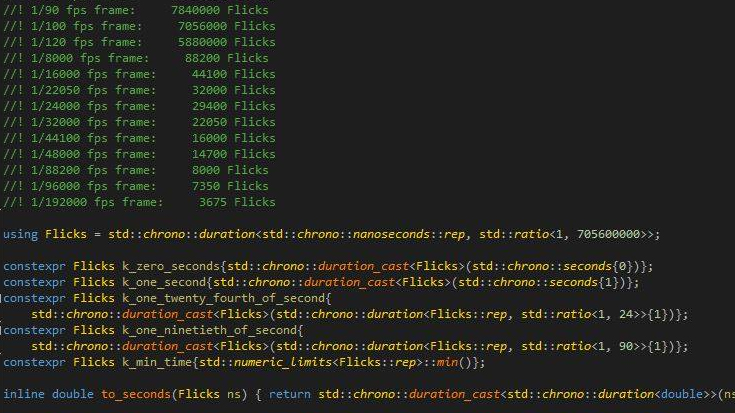Oculus has invented a new unit for measuring time
The 'flick' is an open-source unit designed for frame and audio timing.

Earlier this week, Facebook and Oculus released a new unit of time: the 'flick,' which is short for 'frame-tick' and represents a 705,600,000th of a second.
The unit was first conceived in a 2016 thread posted by Christopher Horvath, who at the time was working at Oculus Story Studio, and serves one specific purpose: it is "the smallest time unit which is larger than a nanosecond, and can in integer quantities exactly represent a single frame duration for 24hz, 25hz, 30hz, 48hz, 50hz, 60hz, 90hz, 100hz, 120hz, and also 1/1000 divisions of each."
In other words, flicks can be used to describe exact frame durations in whole numbers without the rounded fractions you'd get when using metric measurements. For example, 1/30th of a second, a single frame of 30hz video, lasts .033 seconds or 33.33 milliseconds, rounded. Using Horvath's unit, however, one frame of a 30hz video lasts precisely 23,520,000 flicks.
Why does it matter? For one, floating point math calculations can be slower. More importantly, the idea is to keep minuscule timing errors from piling up, especially in VR, where precise timing is necessary.
Horvath, along with several colleagues, refined the unit and finished pushing it through "the Open Source process at Facebook" on Monday, making available an open-source library to aid "writing code that works with simulation and time in media." Just don't expect us to start publishing benchmark results in flicks per frame.
Keep up to date with the most important stories and the best deals, as picked by the PC Gamer team.

Tyler grew up in Silicon Valley during the '80s and '90s, playing games like Zork and Arkanoid on early PCs. He was later captivated by Myst, SimCity, Civilization, Command & Conquer, all the shooters they call "boomer shooters" now, and PS1 classic Bushido Blade (that's right: he had Bleem!). Tyler joined PC Gamer in 2011, and today he's focused on the site's news coverage. His hobbies include amateur boxing and adding to his 1,200-plus hours in Rocket League.

